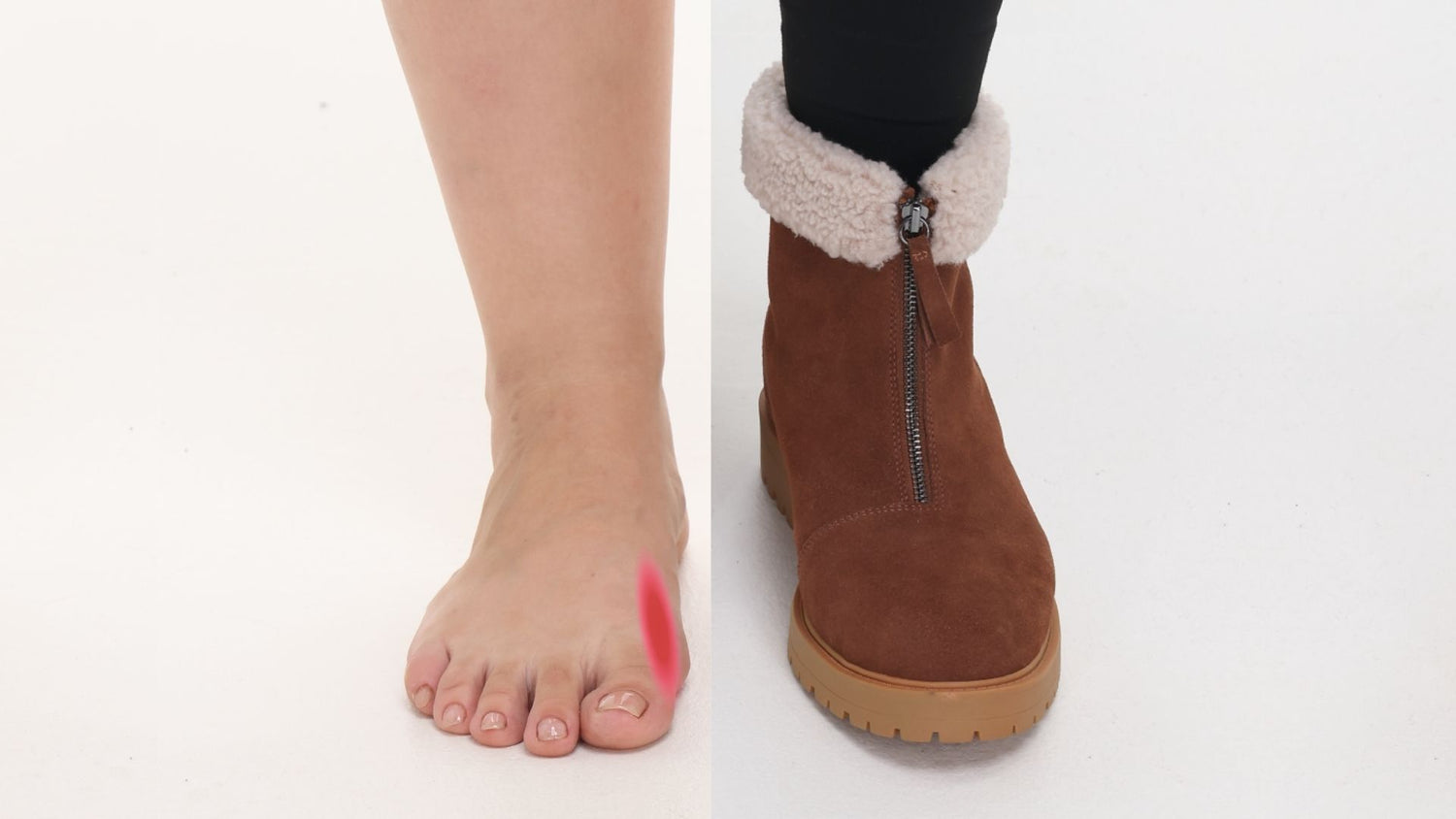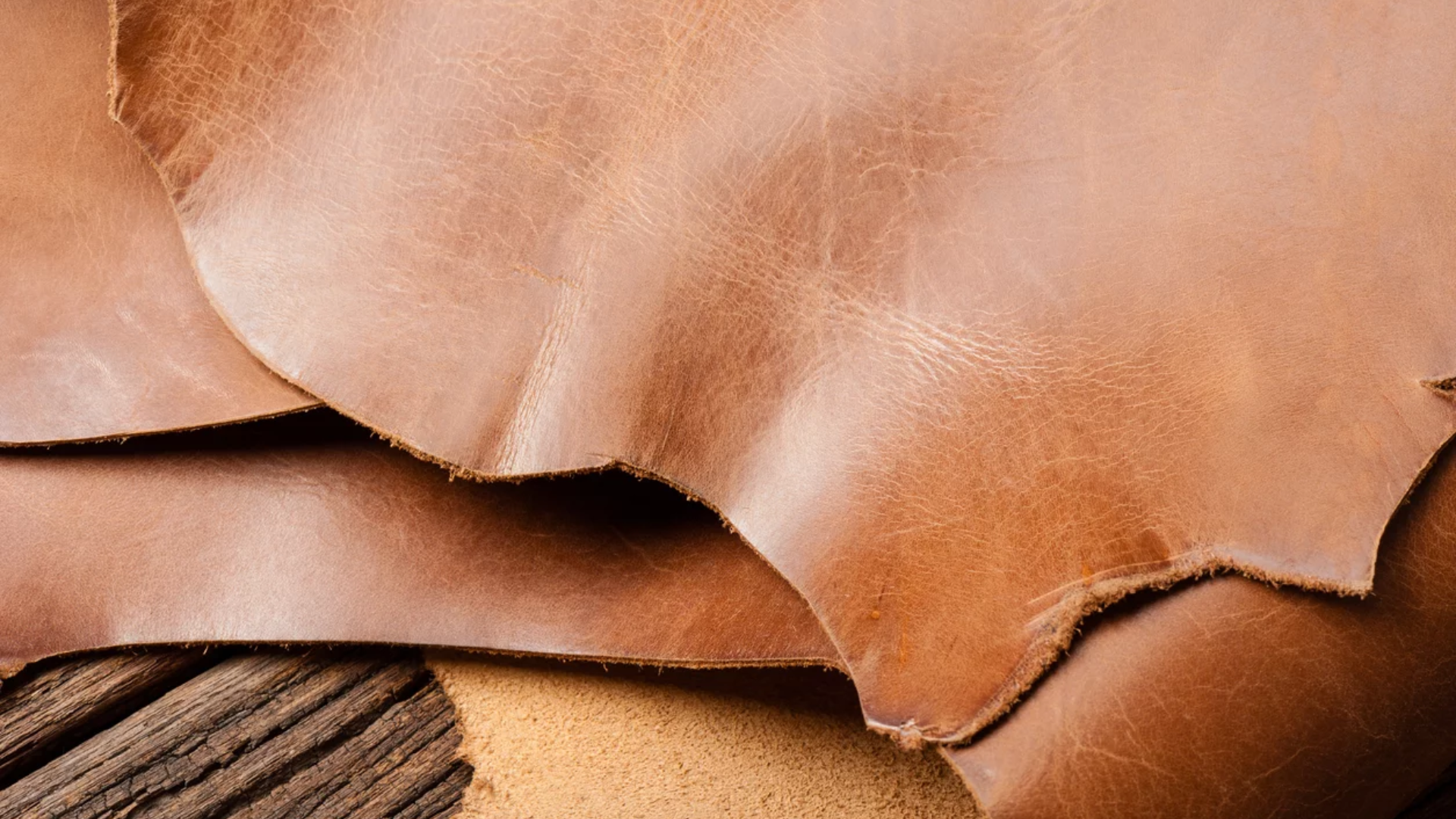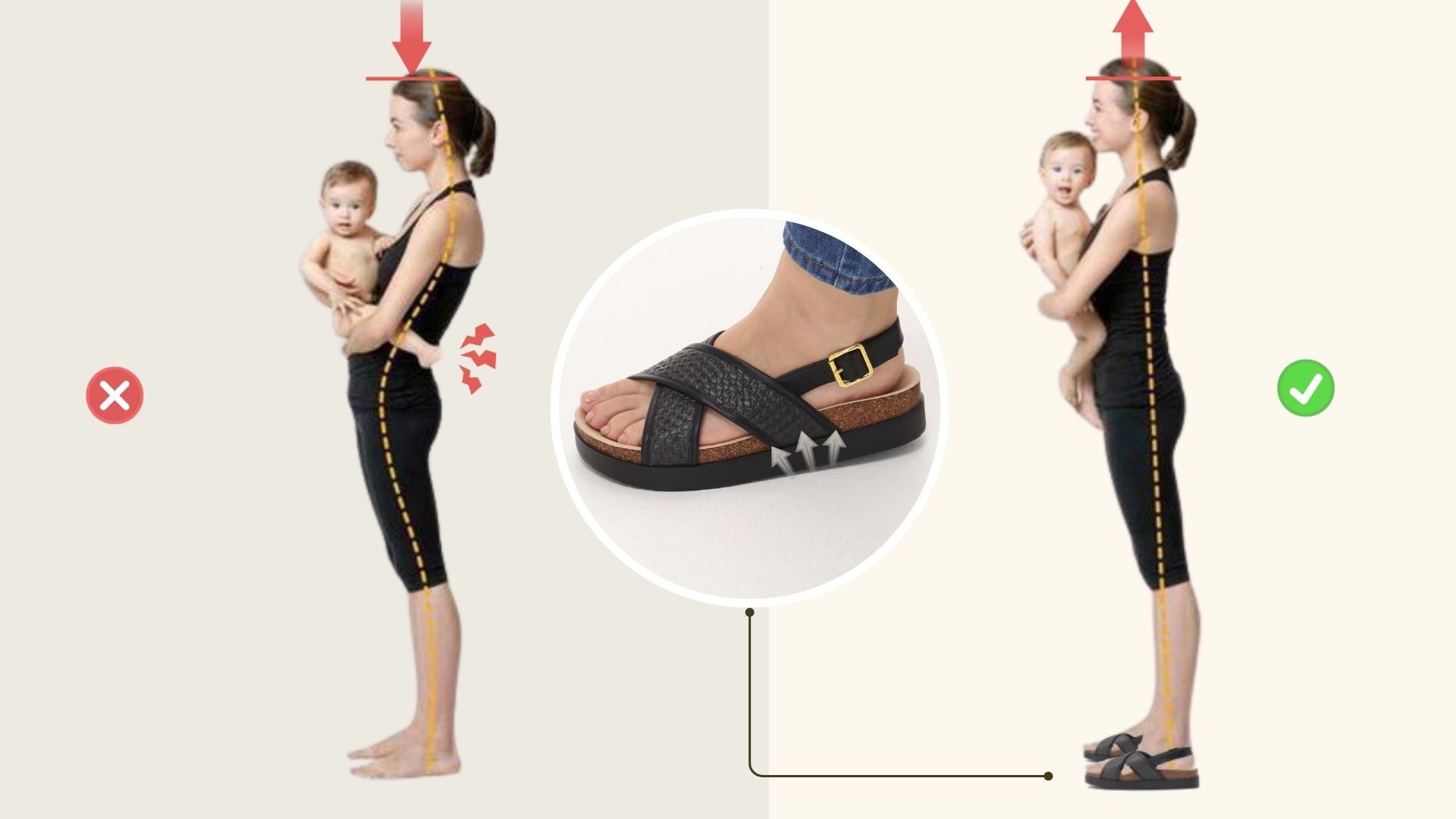If you have bunions or hammertoes, finding shoes that fit right and feel good isn't just a luxury—it's a must. This is because when your feet have either bunions or hammertoes or probably both, every step becomes painful while your feet are put in tight or the wrong kind of shoes. But fortunately, there's good news: getting the right wide shoes can make quite a difference. They provide the room that your toes need, support your arches, and allow your feet to move naturally without squeezing them. In the following guide, we will discuss what to look at in wide shoes if you have bunions or hammertoes, including styles that work well, how to ensure they fit perfectly, and go over some tips to maintain your feet feeling their best with exercises and stretches.
Getting to Know Bunions and Hammertoes
What's the Deal with Bunions?
Bunions are those bony growths, lumps that can form on the side of your foot, exactly where your big toe is located.
Now, picture what would happen if your big toe suddenly wanted to get cozy with its neighbor-toes. It pushes the joint outward, and voilà, the bunion. But it's not just a bump—it's actually showing changes in the bones of your foot. These changes happen little by little, over time. They can make finding comfortable shoes a real treasure hunt. Bunions can also be sore and red, and they may not like being pressed into tight shoes.
Hammertoes: More Than Just Curved Toes
When one refers to hammertoes, think about toes bent in some kind of strange shape, kind of like a hammer. They most often happen to the second, third, or fourth toes. Instead of lying flat, one or more of the small toes bend at the middle joint. Why? Sometimes it's because your shoes squash your toes; sometimes it's because muscles inside your feet get out of balance. Hammertoes can be flexible to start with; if they remain that way, untreated for a long period, they might just stay bent. Trying to walk around on hammertoes can just about be as comfortable as trying to type with your fingers bent—good luck with that!

Why Picking the Right Shoes Matters
When Shoes Make Things Worse
We all have those particular shoes, which we have grown to love but instinctively know they don't do any favors for our poor feet. Poor shoes are not only blamed for short-term blisters or discomfort; instead, they are a culprit for long-term foot problems. Shoes that are too tight, too narrow, or just too flat or with a heel of the wrong height especially can make your toes feel squished and bump up against bunions, and every step becomes an expression of discomfort. In other words, it simply feels wrong in about the same way as wearing a hat that's too small. Bad choices of shoes over time make bunions and hammertoes increasingly painful and even more difficult to manage.
Walking on Cloud Nine: The Perks of Good Shoes
The right shoes can make all the difference. When your shoes are roomy enough for your toes, with cushioning where it counts and support for the shape of your foot, walking can feel good again. They distribute your weight evenly, thus putting less stress on those areas of your feet that are already pressured. Think of insoles as a comfy bed for your feet-they are supportive so you are well set to tackle the day with no foot drama. Besides, when your feet are happy, they won't develop new issues. So, in essence, you're giving your feet a big high-five when you invest in proper footwear.
How to Find Shoes for Bunions and Hammertoes
If you have bunions or hammertoes, finding comfortable shoes can be a challenge. Here are some practical tips to help you find shoes that fit well and don't cause pain:
- Look for Wide Widths: Make sure to buy shoes labeled as wide or extra-wide. These will give your toes more room and reduce pressure on the bunion and hammertoe areas.
- Check for Depth: Shoes should have enough depth to accommodate any raised areas of your foot comfortably. This helps prevent rubbing and irritation on the top of your feet.
- Prefer Soft Materials: Choose shoes made from soft leather or fabric that can stretch to conform to the shape of your feet without causing friction.
- Adjustable Features: Opt for shoes with adjustable straps or laces. These can be loosened to create more room if your feet swell during the day.
- Seamless Interiors: Inside seams can irritate bunions and hammertoes. Look for shoes with smooth interiors.
- Cushioned Footbeds: A cushioned insole can provide extra comfort and support, which is beneficial if you spend a lot of time on your feet.
- Avoid Pointy Toes: Shoes with pointy fronts can squeeze your toes into an unnatural position. Instead, choose shoes with a rounded or square toe box.
- Try Before You Buy: Always try on shoes later in the day since feet tend to swell. Walk around in them to ensure there's no pinching or discomfort.
-
Consider Orthotics: Sometimes, custom orthotics might be necessary. They can provide the right support for your specific foot issues and can be used in conjunction with suitable shoes.

Top Shoe Choices for Feet with Bunions and Hammertoes
Penny Loafers and Scrunch Loafers: Stylish Yet Spacious
Loafers are a smart choice because they can look good while giving your feet the comfort they need. The classic penny loafer will not squeeze your foot, and the scrunch loafer with its soft, flexible upper stretches to accommodate the shape of your foot. Fortunately, many loafers come in wider widths, which is great news if you're dealing with bunions or hammertoes. These types of shoes will certainly keep your feet comfortable all day no matter what the occasion calls for. The trick is to get shoes that fit correctly but do not pinch or restrain your feet in any way. This way, you do not have to compromise your comfort to look good.
Mary Janes for Bunions and Hammertoes
Mary Janes shoes would be ideal for those suffering from bunions and hammertoes, because the front part is wide and might give your toes enough room. The strap over the top holds it in place without having to press hard on your foot inside the shoe. While choosing Mary Janes, ensure there is enough room at the front where your toes will not rub together, hence reducing the pain in your bunion or hammertoe.
Flat Slides for Easy Comfort
Slides will suit people with foot problems. Since there are no laces or straps, they are easy to slip on and off. Find a slide which is sufficiently wide not to put pressure on bunions or hammertoes but has a design that mirrors the lines of your foot and a supportive sole for comfortable walking.
How to Care for Bunions and Hammertoes
Caring for feet with bunions and hammertoes isn't just about what you wear – it's also about giving your feet a little workout. Just like the rest of your body, your feet need exercise to stay strong and flexible.
Wiggle and Spread Your Toes Daily:
Spend a bit of time each day wiggling the toes and then spreading them as far apart as possible. Again, this is not only about movement forward and backward but also independent lifting of every toe or even in small groups to develop the muscles. Sometimes, pick up marbles or even a towel from the floor with your toes just to give your toes a little challenge, which would work into dexterity and the tiny muscles of the feet.
Do Daily Toe Presses and Pulls for Foot Flexibility:
You want the entire foot to be limber, encouraging health. Once you press your toes against the floor, stretching the top of the foot, pull the toes back up to work on the underside. This will soothe tension in the entire foot and will be beneficial for those with bunions and hammertoes.
Roll a Ball Under Your Feet to Ease Soreness:
In the case of sore soles, take a tennis ball and gently roll it under your foot, applying comfortable pressure. This massage-like movement relieves not only discomfort but also alleviates arch tightness by stretching the plantar fascia—the band of tissue that runs along the bottom of your foot.
Stretch Your Calves with Heel Lifts and Lowering Exercises:
Since tight calf muscles can contribute to foot problems, exercises like heel raises (standing on your toes) and step drops (letting your heels hang off a step) are invaluable. These movements help stretch and strengthen the calf muscles, reducing strain on your feet.
Make Your Feet Stronger with Towel Grips:
Strengthening exercises, focusing on the feet, can avoid further bunion and hammertoe conditions. Light exercises, such as creating resistance with a towel or with toe separators, can work the muscles that support your foot structure.
Ease Foot Pain with Routine Stretching and Strengthening:
Regularly performing these specified exercises can lead to reduced pain levels and better joint mobility in your feet. Over time, they can make daily activities and walking more comfortable by improving flexibility and cushioning the impact on your joints.

Make Room for Comfort with Wide Shoes
If you're dealing with foot pain from bunions or hammertoes, picking out the right shoes is really important. Look for ones that give your toes plenty of room and offer good support underneath. Remember to measure your feet so you know what size you need, and always walk around in new shoes before you buy them to be sure they feel good. Doing some easy stretches and exercises every day can help keep your feet in shape and cut down on the pain. Taking these steps can really change how your feet feel, making walking around something you can enjoy again. Keep it comfy, keep it cozy – your feet will thank you for it!



